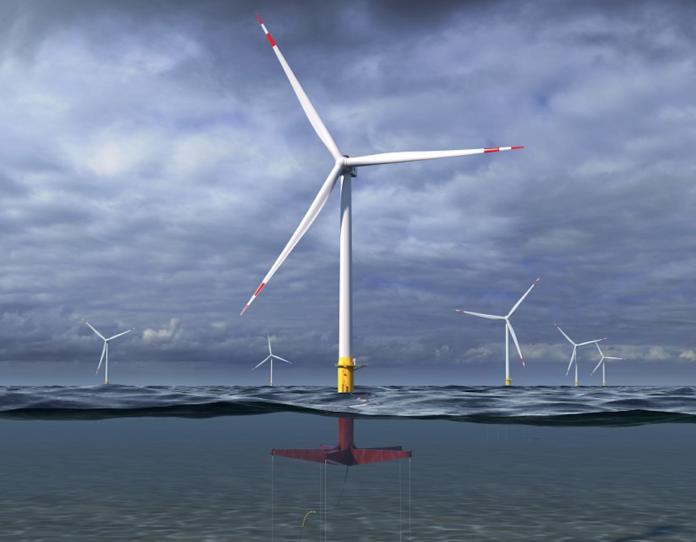GE researchers have unveiled details of an ongoing two-year, $4 million project through the ARPA-E’s Aerodynamic Turbines Lighter and Afloat with Nautical Technologies and Integrated Servo-control (Atlantis) program to design and develop advanced controls to support a 12 MW floating offshore wind turbine.
GE is partnering on the project with Glosten, a design and consulting firm that specializes in the marine industry and the developer of the PelaStar tension-leg platform floating wind turbine foundation.
Accelerating the development of new technologies to promote the future of floating offshore wind energy is the key objective of ARPA-E’s Atlantis program. By coupling a 12 MW GE turbine with Glosten’s tension leg platform technology, the team says it has taken on the challenge of designing a lightweight floating turbine with up to 35% less mass in the tower and the floating platform. The core principle that makes this possible is co-designing the controls system with the tower and floating platform.
“We excel when we engage across all of the active disciplines and components as we optimize our floating structures for a full system solution,” says Ben Ackers, vice president of the ocean engineering and analysis group at Glosten. “Collaborating closely with GE gives us another layer of detailed engineering design input beyond the standard drivers of site conditions, construction cost, schedule and the resulting LCOE. This is the cooperation needed to bring floating wind to technical and commercial success.”
Between GE Research and Glosten, the joint research team brings decades of expertise in all areas of technology involved in carrying out the mission of the project, including turbine controls, structures, aero engineering, naval architecture and hydrodynamics.
According to the National Renewable Energy Lab (NREL), the introduction of floating turbines would expand the potential of U.S. offshore wind resources to more than 7,000 TWh per year, nearly double the total annual U.S. energy consumption of 4,000 TWh.
Photo: An artist’s rendering of the 12 MW floating wind turbine concept




